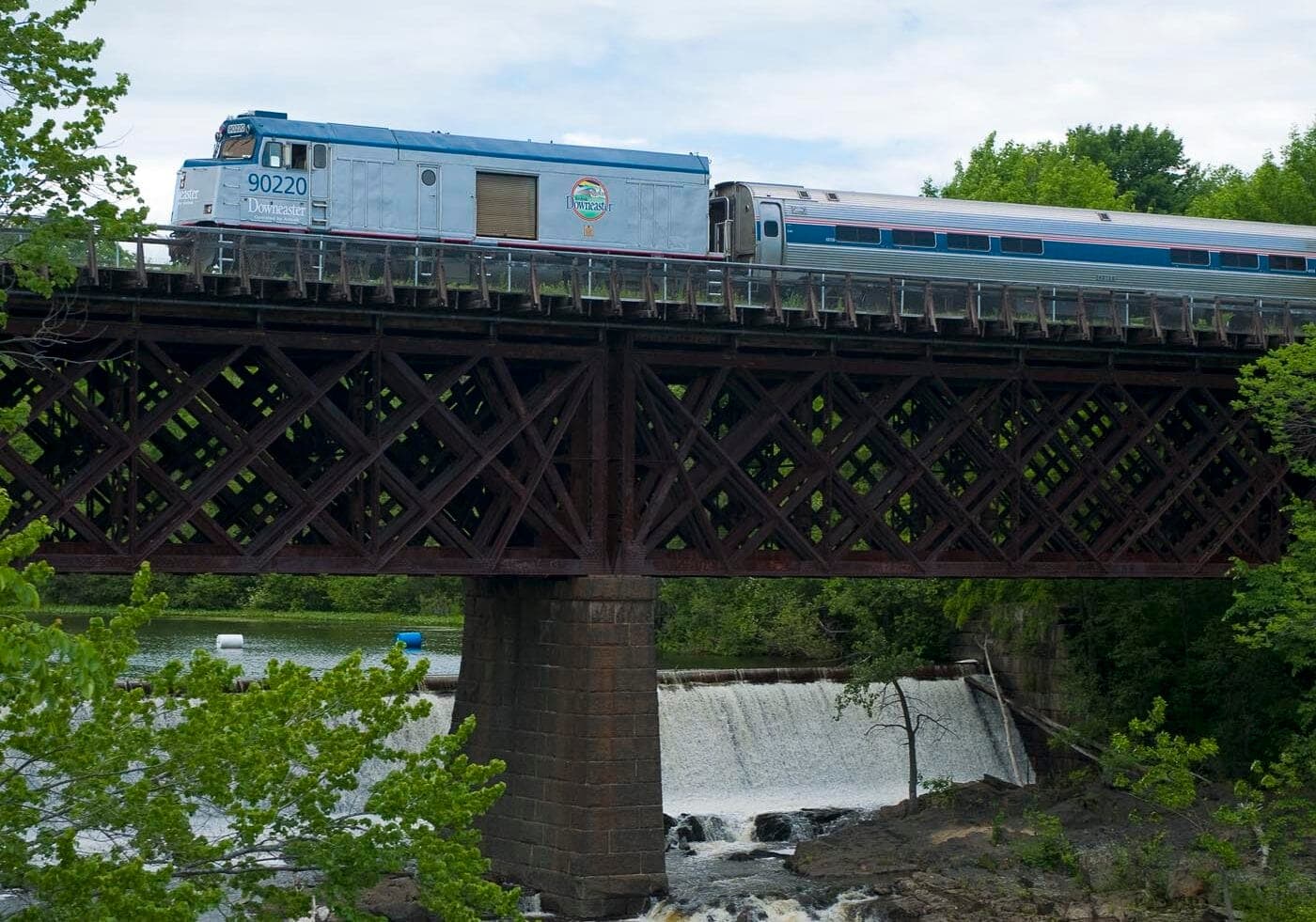
News
By Anushka Thakkar, July 27, 2023
Read the report and learn more about the eight other communities we profiled here.
DOWNEASTER RAIL SERVICE CONNECTS COMMUNITIES
Location: Saco, Brunswick, and Surrounding Rural Communities, ME
Population: 19,716 (2020)
Typologies: Gateway; Resource-dependent; Retirement, second-home; Traditional main street; College; Edge.
Key takeaway: Transit service can make living in rural areas more attractive for young adults who want access to attractions and resources in nearby cities, and more feasible for older adults who need access to health care services.

A number of rural communities have expanded transit service and have seen significant benefits. The Amtrak Downeaster rail service in Maine began over 20 years ago through a citizen-initiated bill, the first of its kind, called the "Passenger Rail Service Act.” The service acts as an anchor for the interconnectedness of smaller communities in Maine, for students to get to colleges and universities in Saco and Brunswick, and for a large proportion of the senior population to access medical services in Boston.
Changes brought by COVID-19 have created opportunities for rural communities like those in Maine. Many young adults have moved to fewer urban parts of Maine because of the increased flexibility of remote work. For example, Saco, Maine, has a walkable downtown; is one of the fastest-growing communities in Maine; and saw an increase in its younger population during the initial years of the pandemic. The Downeaster train connects this growing population to cities like Boston for services and entertainment, which according to agency officials, is often cited as an attractive factor for younger people to live in parts of Maine. For older residents, Downeaster has a partnership with the American Cancer Society to offer $15 fares for people going from anywhere in Maine to Boston for medical appointments. The discounted fair applies to both the patient and a travel companion.
“Each train has its own distinct personality. For example, 682 is the second Southbound Train to Boston, so we get a couple business travelers, some leisure travelers, seniors that are going to medical appointments. That's very different from 686 which is usually the sports fans and that’s where we sell beer and chicken sandwiches.” – Patricia Quinn, Executive Director, NNEPRA, Downeaster, ME
Related News

© 2026 Smart Growth America. All rights reserved
Site By3Lane Marketing

















